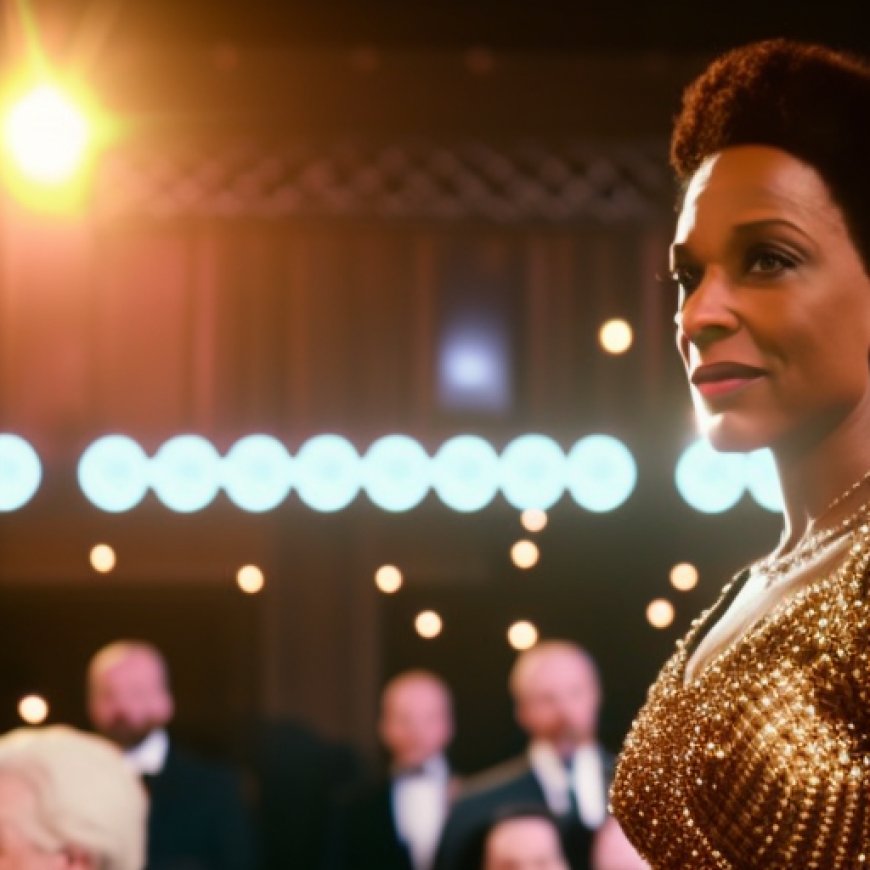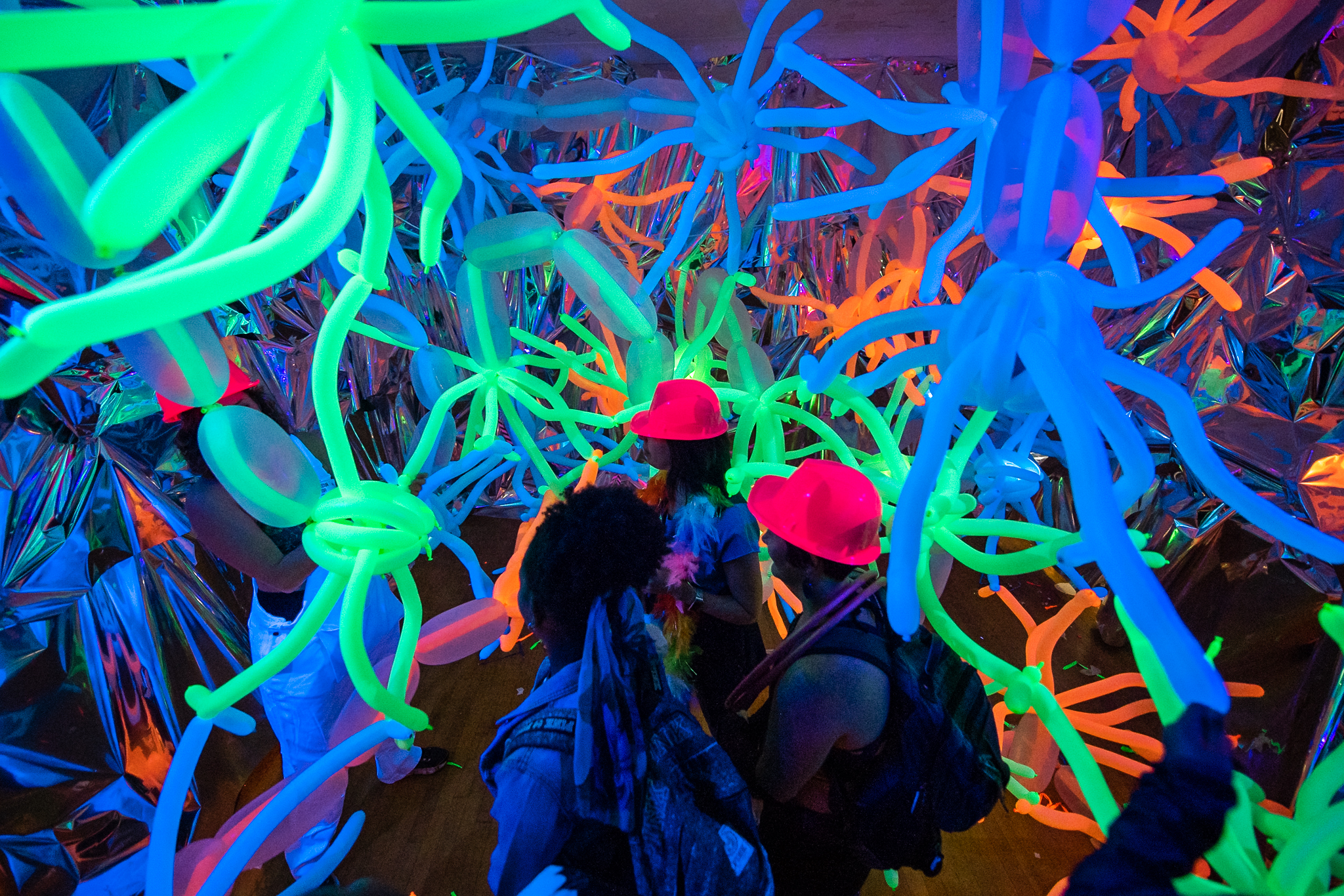National Science Foundation Awards $2 Million to Pratt for Climate Justice Project


The National Science Foundation Awards $2 Million Grant to Pratt for Climate Justice Programming
The National Science Foundation (NSF) has awarded $2 million to Pratt to fund community programming that increases climate literacy and promotes climate justice. The “Co-Design for Climate Justice: Youth expression through Science-rich Public Art” project, funded by the NSF’s Advancing Informal STEM Learning (AISL) program, is led by Mark Rosin, associate professor of math and science.
Blending Art and Science for Climate Education
This grant builds on Rosin’s work blending art and science in pop-up exhibits at festivals and cultural events through his organization Guerilla Science. With the new funding, Rosin’s team will collaborate with arts, community, and climate-focused groups to create opportunities for local youth—specifically Black, Indigenous, and People of Color (BIPOC)—to co-design events, experiences, and installations on Governors Island that reflect their concerns about climate change.
Engaging Youth and Communities
Throughout the project, Rosin’s team will conduct surveys and interviews with youth, guide them in various design roles, and establish best practices for engaging the public around issues of climate literacy and justice. The project aims to develop adaptable frameworks for community engagement by focusing on the lived experiences of local communities affected by climate change.
Science & Art Interfacing for Climate Education
The project is another in a growing body of Science & Art interfacing actions by Pratt Mathematics and Science department faculty, who are committed to informing the public of scientifically established realities through creative practice.
Giving a Voice to Youth
“The effects of climate change are going to be felt most acutely by the most disenfranchised members of society, not the most powerful,” said Rosin. “This project will help give a voice to the young people of New York. We are especially excited to see how bringing together science, art, and youth voices can create new narratives and modes of communicating about climate change and climate justice.”

Creating a Creative Incubator for Youth
In the summer of 2024 and 2025, the project will launch a paid creative incubator, in collaboration with the Brooklyn non-profit BEAM Center, to support collaborations between youth, artists, scientists, and educators.
Influencing Community Engagement Strategies
An estimated 10,000 people are expected to engage with the project’s events on Governors Island over the next few years and these efforts will influence the community engagement strategies of the New York Climate Exchange, of which Pratt is a founding partner.
SDGs, Targets, and Indicators
-
SDG 4: Quality Education
- Target 4.7: By 2030, ensure that all learners acquire the knowledge and skills needed to promote sustainable development, including, among others, through education for sustainable development and sustainable lifestyles.
- Indicator: The project aims to increase climate literacy among local youth and promote climate justice through community programming and art installations.
-
SDG 13: Climate Action
- Target 13.3: Improve education, awareness-raising, and human and institutional capacity on climate change mitigation, adaptation, impact reduction, and early warning.
- Indicator: The project aims to increase climate literacy and awareness among local youth and engage them in designing events, experiences, and installations that reflect their concerns about climate change.
-
SDG 16: Peace, Justice, and Strong Institutions
- Target 16.7: Ensure responsive, inclusive, participatory, and representative decision-making at all levels.
- Indicator: The project aims to give a voice to young people, specifically Black, Indigenous, and People of Color (BIPOC), in New York by engaging them in co-designing events and installations on Governors Island that reflect their concerns about climate change and climate justice.
Table: SDGs, Targets, and Indicators
| SDGs | Targets | Indicators |
|---|---|---|
| SDG 4: Quality Education | Target 4.7: By 2030, ensure that all learners acquire the knowledge and skills needed to promote sustainable development, including, among others, through education for sustainable development and sustainable lifestyles. | The project aims to increase climate literacy among local youth and promote climate justice through community programming and art installations. |
| SDG 13: Climate Action | Target 13.3: Improve education, awareness-raising, and human and institutional capacity on climate change mitigation, adaptation, impact reduction, and early warning. | The project aims to increase climate literacy and awareness among local youth and engage them in designing events, experiences, and installations that reflect their concerns about climate change. |
| SDG 16: Peace, Justice, and Strong Institutions | Target 16.7: Ensure responsive, inclusive, participatory, and representative decision-making at all levels. | The project aims to give a voice to young people, specifically Black, Indigenous, and People of Color (BIPOC), in New York by engaging them in co-designing events and installations on Governors Island that reflect their concerns about climate change and climate justice. |
Source: pratt.edu








